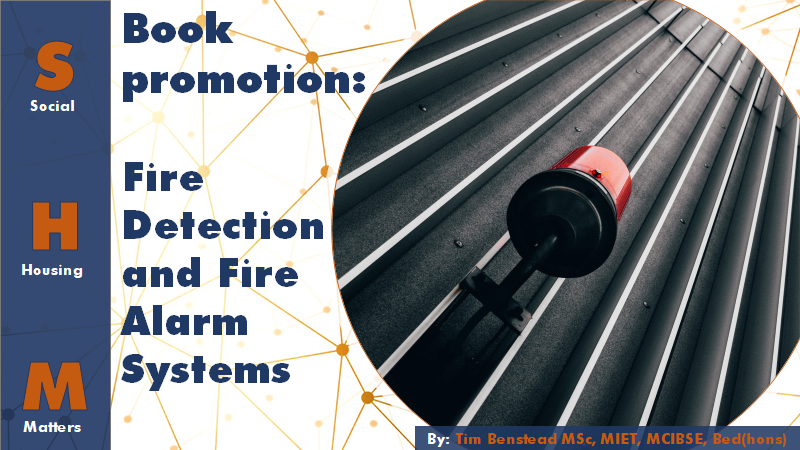By: Tim Benstead

In the aftermath of the Grenfell Tower tragedy and the subsequent Hackitt Report, it is clear that the whole construction industry is undergoing a wholesale review of its practices. As part of this review, competence has rightly become a clear factor that must be suitably considered.
British Standards are non-statutory documents which detail minimum recommendations for processes, behaviours, leadership, equipment, design, installation practice and the like. Each Standard is given a unique identifying number and title and is overseen by a committee of key stakeholders within a specific industry.
In the UK, legislation and British Standards together impact upon the practices and behaviours within the construction industry. BS 5839-6 is a code of practice reflecting current best practice for the design, installation, commissioning and maintaining of fire detection and fire alarm systems in domestic premises, including flats and apartments. This standard is maintained by the committee FSH12/1. This committee contains, senior fire officers, fire engineers, manufacturers, certification bodies and electrical engineers amongst others. All designers, installers etc should comply with the relevant parts of the standard. Furthermore, there are expectations placed upon landlords and housing managers within the standard.
Fire statistics
Each year the fire and rescue services of each of the home nations produce data relating to the incidents they have attended. The data for England is published by the Home Office and the figures detailed are reflected throughout the rest of the UK.
This data highlights a number of key features:
- Smoke alarms work in reducing the risk of death or injury.
- The fire related fatalities per million is higher for men and older people.
- Of the 243 fatalities in England in 2019/20, 199 occurred in dwellings (in Scotland there were 21 fatalities in dwellings in a similar timeframe).
- 21% of mains powered smoke alarms and 37% of battery powered smoke alarms fail to operate.
Looking at historical data, the failure rate of mains powered and battery powered alarms has remained stubbornly set at the percentages stated above (37% and 21% respectively). There are many reasons for this, however these include amongst other things, fire not covered by the fire detection and fire alarm system within the premises, a fault or incorrectly installed alarms, defective batteries, missing batteries and poor maintenance.
At the heart of many of these issues is a failure to give due consideration to an appropriate risk assessment within domestic premises, inadequate design, inappropriate choice of alarms, poor positioning of alarms and poor maintenance regimes.
Whilst many electricians will be familiar with the installation of smoke and heat alarms within a domestic premises, too many will be less familiar with the specific recommendations of BS 5839-6 for fire detection and fire alarm systems. Too often the electrical contractor complies with the minimum recommendation detailed within local guidance, such as Approved Document B in England and Wales and the Technical Handbook in Scotland and fails to account for specific risks within a dwelling when deciding upon the Grade and Category of system.
For landlords and those having responsibility for fire detection and fire alarm systems, guidance is equally necessary as they need to satisfy themselves that they are in compliance with relevant standards and legislation.
The Practical Guide to Grade D Fire Alarm Systems
Tim Benstead MSc, MIET, MCIBSE, BEd(Hons) has authored The Practical Guide to Grade D Fire Alarm Systems as a readily accessible publication based on BS 5839-6 for Grade D systems. The publication focuses on Grade D systems as this is the most commonly used grade of system installed in dwellings.
The book supports the electrical contractor and those involved with fire safety in dwellings in understanding their roles and responsibilities. The book covers:
- The nature of fire and fire spread
- Fire risk assessment
- Competence
- Design
- Installation
- Commissioning and certification
- Maintenance, and
- Servicing procedures by competent persons.
About the Author
Tim was the former Principal Technical Author/Engineer with Certsure LLP (operating the NICEIC brand) and was responsible for all the books, Connections articles and the Technical Manual and writes with credibility and insight into the issues raised within the industry.
Tim is currently the Chair of JPEL64/B, a member of JPEL64, and has been a member of FSH12 and FSH12/1 (the BSI committee responsible for the standards BS 5839-1 and BS 5839-6) for more than fifteen years. He is also a member of FSH17, the committee responsible for the production of BS 8629 dealing with Emergency Evacuation Systems.
Distributed by www.docs-store.co.uk and major electrical wholesalers



